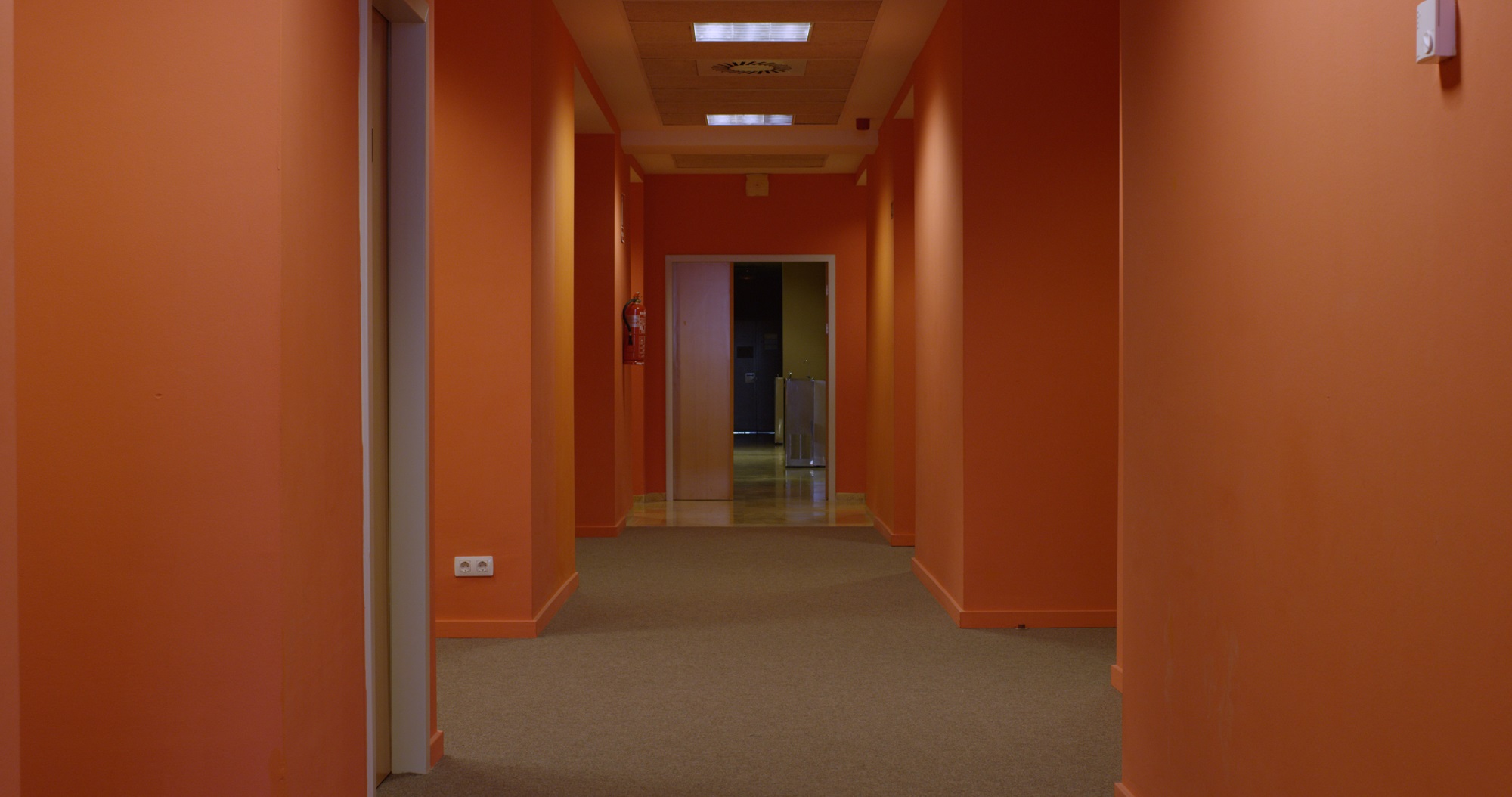THURSDAY NOVEMBER 25 6:30 - 8:30 PM
Ana Esteve: The Magic Screen. 2018 (21 min.)
The Magic Screen is a piece created following a promotional video that depicts the City of Light, a 320,000 square metre film studio built in Alicante in 2005 by public initiative, with the intention of turning it into the European Hollywood. However, fourteen years later, its sets, warehouses, set construction workshops, dressing rooms, make-up rooms, production support facilities and outdoor filming areas are in disuse, after it officially closed in 2014. Since then, it has been put up for auction twice and is currently for sale with the intention of it resuming operation in some way.
In the video, we learn about all the filming locations available within the City of Light as a presenter explains the functions and features of each area in detail. During this visit, we unpack the construction of the audio-visual image while reflecting on the importance and power of fiction, in this case cinematographic fiction, as the basis for the construction of reality and its perception. How important are cinematographic stories as a scenario and projection of collective dreams? This audio-visual journey through the interior of the City of Light reveals the history and life of the moving image, while questioning the existence and survival of this type of imaginary. The film studio is presented in ruins, prompting a reflection on failing projects, but also on how they can become places to be visited, venerated and mythologised.
A reflection on the importance of cinematographic fiction in the construction of the collective imaginary and a subtle but stinging criticism of the building of huge infrastructures that, over time, become deserted and unused.
Cristina Garrido - Boothworks. 2017 (13 min.)
Boothworks is a fictional documentary in which a narrator describes, from an uncertain future, an international art form that consolidates around the 2010s. This new art form, created by the gallery owners of the time, took the gallery booth as an artistic medium and the art fair as its exhibition space. Booth art, as the narrator calls it, was nomadic, portable, "anti-gallery," ephemeral, performative, site-specific, and resistant to becoming a commodity. However, the narrator complicates this challenging art form by questioning its relationship to capitalism, its social impact, the focus shift from the art object itself to its context, the institutional and curatorial objectives that promoted these practices, and how the figure of the art critic became unnecessary under these new circumstances.
The text is a collage composed entirely of (edited) quotes from renowned art critics, curators, art historians, artists and other artistic agents who talk about conceptual, site-specific, performative and ephemeral art practices of the 1960s and 70s, such as Lucy Lippard, Miwon Kwon, Germano Celant, Helen Molesworth, Seth Siegelaub and Joseph Kosuth, among others.
The visual part of the video comes from video documentation of art fairs and other events found on the Internet, on platforms such as Vernissage TV.

Ana Esteve. La pantalla magica.